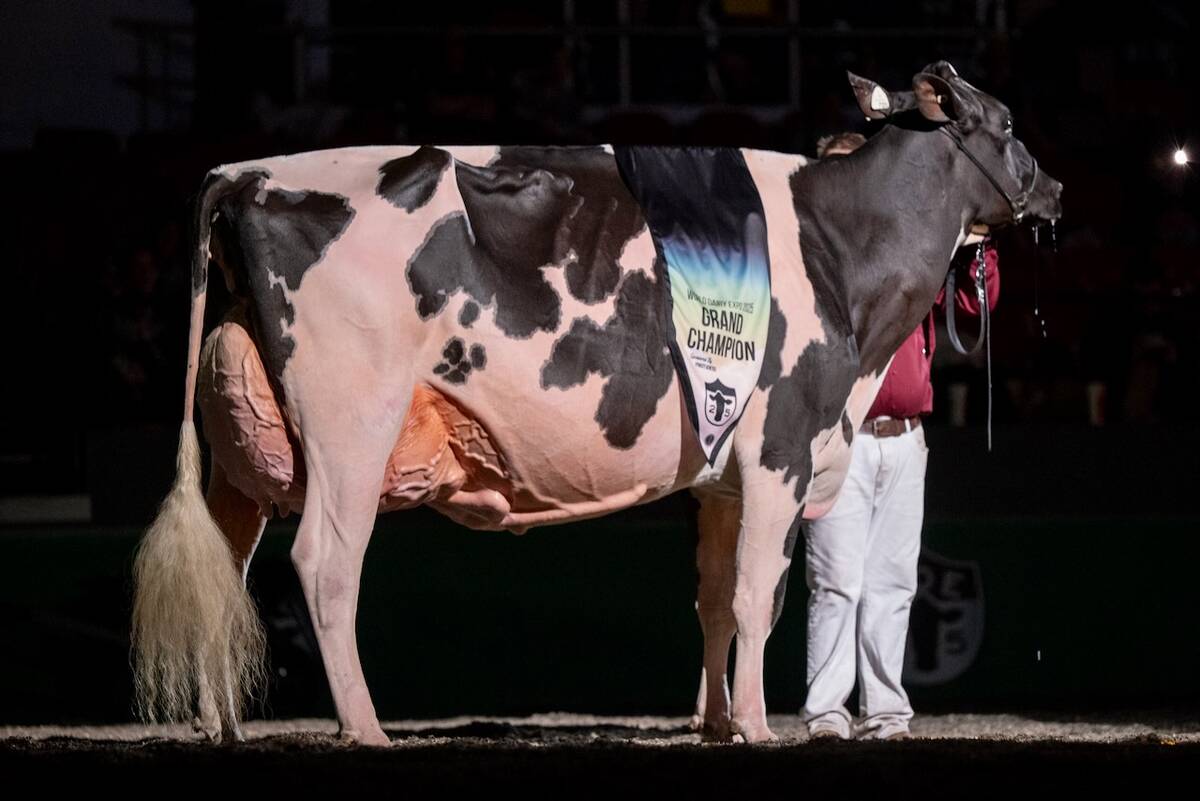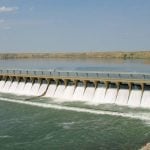WEYBURN, Sask. — Location is the key consideration for producers who intend to bale graze.
Research that found more nutrients and pathogens in runoff from bale grazing sites than control sites isn’t a surprise, said Etienne Soulodre, the Saskatchewan Water Security Agency’s senior agrologist.
The issue is what to do about it, he told the Saskatchewan Forage Council’s recent pasture school.
“It’s all about management,” he said, beginning with picking the site for winter feeding.
“Let’s put this stuff on perennial grass. Don’t put it somewhere where it’s going to run off site.”
Read Also

Canadian-bred cow wins World Dairy Expo Holstein show
A cow bred in Saskatchewan, Lovhill Sidekick Kandy Cane, is the Grand Champion Holstein at the 2025 World Dairy Expo.
Many producers are moving to extensive feeding to add nutrients to their fields and save money.
Research at the Western Beef Development Centre has shown that more nitrogen is recovered from bale grazing on pasture than by spreading manure from cattle fed in confinement.
However, research at the centre and in the Pipestone Creek watershed of southeastern Saskatchewan has also shown that levels of nitrogen, phosphorus and bacteria in the runoff can exceed water quality guidelines.
Soulodre said the finding makes sense because bale grazing delivers bales that contain nutrients in a concentrated area and also adds more nutrients from cattle urine and manure.
He said feeding on snow is always a challenge because of spring runoff, and producers have to be conscious of where they plan to feed in winter.
Saskatchewan Agriculture recommends a site where runoff to surface water is minimal or contained. Riparian areas, steep slopes and areas that drain directly into water sources should be avoided.
Soulodre said it’s not a good idea to put bales on native prairie because of the weed issues that can arise.
Deposited nutrients are considered economically optimal and environmentally safe at a density of 25 hay bales per acre, 12 metres apart, according to the agriculture ministry.
This would result in about 75 pounds of plant available nitrogen deposited per acre.
Soulodre said density and placement come down to common sense and depend on soil texture and other factors.
Lorne Klein, a regional forage specialist in Weyburn, said bales should be placed in the spaces between where bales were before.
As well, sites should be alternated. The ministry advises once every five years on a given site.
“You don’t want to be doing it year after year after year,” Klein said.
The 2006 Farm Environmental Management Survey found that most producers are moving feed to different locations and feeding in open areas.
This is considered a beneficial management practice because it distributes manure and feed waste nutrients across larger areas.















